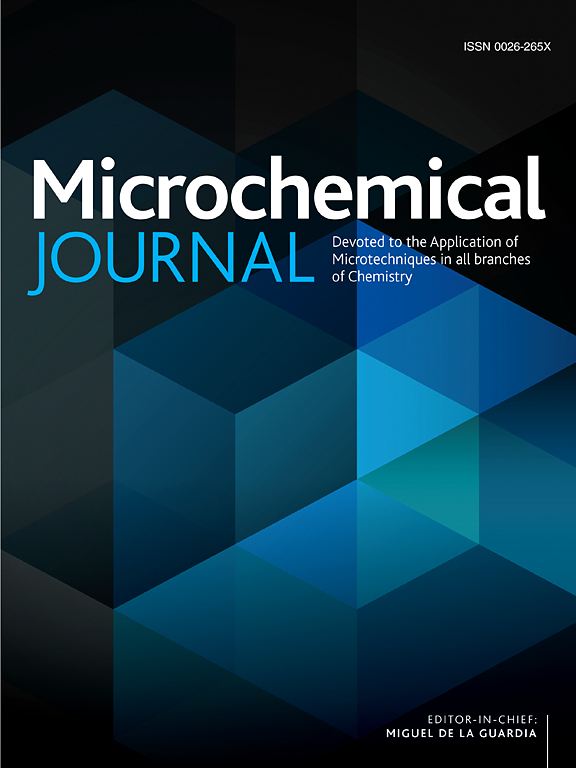Construction of bimetallic MOF derived nickel–cobalt selenide on carbon cloth as integrated electrode for acetaminophen sensing
IF 4.9
2区 化学
Q1 CHEMISTRY, ANALYTICAL
引用次数: 0
Abstract
Herein, a simple in situ synthesis strategy to construct MOF-derived bimetallic nickel–cobalt selenide (NiCoSe) nanoparticles on carbon cloth (CC) was reported for the electrochemical determination of nonsteroidal anti-inflammatory drug (NSAIDs) acetaminophen (AC). Homogeneous NiCo-MOF nanosheets were first grown onto CC, followed by the phase and morphology conversion of MOF nanosheets into NiCoSe nanoparticles with the selenization step. Flexible CC served as an effective nucleation substrate, significantly mitigating nanoparticle aggregation and providing a larger surface area with highly exposed active sites for target interaction. Due to the excellent electrical conductivity of CC and the synergic catalytic effect between bimetallic selenides, the NiCoSe/CC integrated electrode exhibited significantly enhanced electrocatalytic activity for AC electrooxidation compared to the conventional coated electrode (NiCoSe/GCE). Under optimized conditions, this NiCoSe/CC electrode achieved a low detection limit of 0.012 μM for AC, accompanied by a high sensitivity of 0.147 μA μM−1, within an effective linear range of 0.05–200 µM. Furthermore, the sensor with good reproducibility and anti-interference also achieved practical detection of AC in tablet samples and environmental water samples with recoveries of 95.5–105.3 %. This study provided a new idea for constructing MOF-derived bimetallic selenides and their application in flexible electrochemical sensing.

求助全文
约1分钟内获得全文
求助全文
来源期刊

Microchemical Journal
化学-分析化学
CiteScore
8.70
自引率
8.30%
发文量
1131
审稿时长
1.9 months
期刊介绍:
The Microchemical Journal is a peer reviewed journal devoted to all aspects and phases of analytical chemistry and chemical analysis. The Microchemical Journal publishes articles which are at the forefront of modern analytical chemistry and cover innovations in the techniques to the finest possible limits. This includes fundamental aspects, instrumentation, new developments, innovative and novel methods and applications including environmental and clinical field.
Traditional classical analytical methods such as spectrophotometry and titrimetry as well as established instrumentation methods such as flame and graphite furnace atomic absorption spectrometry, gas chromatography, and modified glassy or carbon electrode electrochemical methods will be considered, provided they show significant improvements and novelty compared to the established methods.
 求助内容:
求助内容: 应助结果提醒方式:
应助结果提醒方式:


